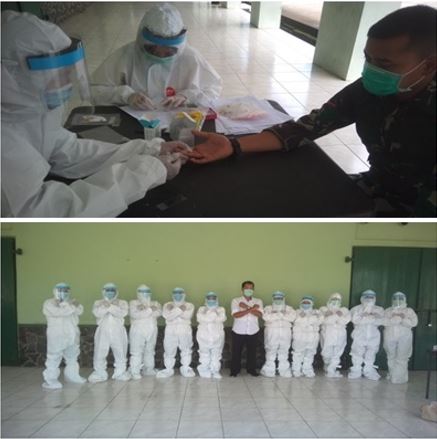Purworejo District in Central Java Province has shown that investing in surveillance and village malaria workers is effective to interrupt the local transmission of malaria and contribute to malaria elimination.
Purworejo District in Central Java Province is located in the Menoreh hills, the natural habitat of malaria vector Anopheles mosquitoes. The district used to be one of the highest contributors to malaria cases on Java island. In 2015, Purworejo District Health Office (DHO) recorded around 1400 malaria cases in one year. In 2018, the number of malaria cases dropped to 189 indigenous and seven imported cases. In 2019, the district recorded 0 indigenous and 26 imported cases, and in 2020, only seven imported cases were recorded. How did Purworejo succeed to bring down the number of malaria cases from 1000 to 0 in five years?
“We realized that our migration surveillance needed to be strengthened,” said the Head of Purworejo District Health Office Sudarmi. “Although we had made significant progress over the past decade in terms of interrupting local malaria transmission, we had to prevent the re-establishment of local transmission through imported cases from endemic areas into receptive and non-receptive areas in our district.” The Purworejo DHO, the Purworejo District Government, the Ministry of Health and WHO worked together to bolster efforts to control malaria in the district.
The first strategy was ramping up migration surveillance to prevent malaria reintroduction from endemic areas into Purworejo District. People arriving from malaria endemic areas were screened by village malaria workers, locally known as Juru Malaria Desa (JMD). Any malaria symptoms had to be notified to village malaria workers and the community health centre (puskesmas), and the person presenting symptoms had to get tested quickly.
“Even if the person coming from endemic malaria area arrived at night, our village malaria workers would not wait until the next morning. Village malaria worker and community health centre (puskesmas) staff would immediately approach the person, administer a rapid test, and oblige the person to use a bed net and mosquito repellent to stop him/her from getting bitten by mosquitoes that may spread the malaria parasites further,” said Sudarmi.
A total of 14 community health centres (puskesmas) in malaria-receptive areas in Purworejo stood ready to implement robust migration surveillance. This effort intensified around one month before the Idul Fitri ‘homecoming festival’, where an influx of people working in other cities and provinces return to Purworejo.
When COVID 19 was reported in Indonesia, Purworejo DHO stepped up their measures to prevent the transmission of SARS-CoV-2. Health care workers implemented public health measures, including wearing a mask, maintaining physical distancing and wearing appropriate personal protective equipment. In December 2020, Purworejo DHO assigned 20 health care workers to administer rapid malaria and COVID 19 tests to 420 Indonesian army personnel returning from West Sumatra, using polymerase chain reaction, malaria rapid diagnostic, and microscopic tests.

Caption: Purworejo District Health Office assigned 20 health care workers to administer malaria and COVID 19 tests to Indonesian army personnel returning to Purworejo. Photo credit: Purworejo District Health Office.
Today, all villages in Purworejo have developed a village regulation on malaria control. As a result, village leaders, officials, and community groups are all aware and in support of strict migration surveillance. Village malaria workers are at the frontline of malaria control activities at the community level. They are trained to conduct malaria surveillance and active case finding, administer the rapid test, and assist the community health centre (puskesmas) in case management and mass blood survey. Recognizing the critical role of village malaria workers, Purworejo DHO trained more workers and doubled their incentive to IDR 1 million per month.
On top of strengthening migration surveillance, shortening the time between malaria symptom onset, diagnosis, and treatment was crucial. Purworejo DHO implemented an effective epidemiological investigation protocol to detect malaria cases quickly and stop them from spreading, called the 1-2-5 protocol. Within one day, village malaria workers had to report malaria cases to the community health centre (puskesmas). On the second day, the community health centre had to confirm if it is a positive or negative case. By day 5, the community health centre assisted by village malaria workers had to test 85% of community members living in the area where the malaria case was found and undertake other measures to stop malaria from spreading.
The Purworejo government realized that it takes a whole-of-society approach to sustain the success of eliminating indigenous malaria. The health office worked closely with other departments such as social affairs, public works, and neighbouring districts in intensifying malaria control efforts. In Purworejo development planning meetings, malaria was discussed as one of the priority development issues.
“Malaria is not just a health sector issue. When children are infected with malaria, it will affect school attendance and performance. When a district is rife with malaria, it may affect investment and tourism,” said Sudarmi. “We must eliminate malaria from Purworejo, forever. We want to create a healthier generation and a thriving economy. This can only be achieved when Purworejo is completely free from malaria. We must remain vigilant forever.”
